What instrument should I start playing?
Posted by Trevor Brown on
This is a common question among students who are wanting to play an instrument but may not know what instrument is right for them. Many students aren’t aware of all the options that are available to them or what each instrument sounds like. These are important factors when determining what instrument to play.
Let’s take a closer look at some of the more common instruments on which student’s start.
Orchestra
Orchestral string instruments come in different sizes, unlike wind instruments. This allows younger students to start learning earlier than most schools start teaching.
Violin
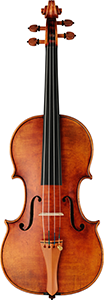
The violin is the smallest and highest pitched orchestral instrument. It is played by either plucking the strings or using a bow. As with all string instruments, the left hand is used for pressing strings down on the fingerboard to change pitches and the right hand uses the bow. Typically, there are no “left-handed” orchestral instruments. The violin is most commonly used in classical music and as a fiddle in folk music.
Viola
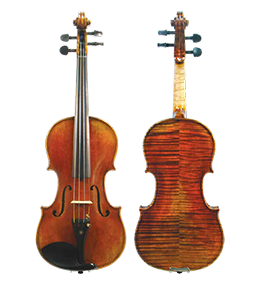
The viola is slightly bigger than the violin and is also stringed differently. It has a slightly lower range than the violin. Because the viola is bigger than the violin, it can produce more full tones in the lower end of its range.
Cello

The cello is much bigger than both the violin and viola. It is strung the same as a viola, but at an octave lower. It is also almost exclusively played while sitting down, where the violin and viola can be played sitting or standing.
Bass

The bass, or double bass, is the largest instrument in the orchestral strings family. It is strung differently than any other instrument and sounds the lowest. Basses may be played while sitting on a stool or while standing. They are commonly played in classical, rock, folk, jazz, bluegrass, and many other popular genres of music.
Band
Woodwinds
Woodwinds are called woodwinds because they require a reed to play or, in the case of the flute, used to be made of wood. Flutes are now generally either silver-plated or made from solid silver. Saxophones use a reed and are made from lacquered brass. Clarinets, oboes, and bassoons are either made from resonite plastic (oboes and clarinets) or wood. The main common characteristic of woodwinds is that they require tone holes to be covered/uncovered on the instrument to raise of lower the pitch.
Flute

The flute is a member of the woodwind family and is played by blowing air at an angle into a small hole in the head joint. Flutes have the highest range of the basic band instruments. Flutes have a closed-hole key mechanism, which means that each tone hole relies on a pad to seal the air around the hole. As flutists become more advanced, they move into an open-hole key mechanism. The open holes require both pads and fingers to close off tone holes. Flutes are used most often in classical music but have also been used in pop, jazz, and folk music.
Oboe

Oboes use a double reed, vibrating against itself, to make a sound. They have a slightly lower range than the flute. As oboists advance in their abilities, many will start to make their own reeds. This helps cut down on the cost of the reeds and allows for personalization of each reed and the ability to tailor the reeds more to the player’s liking. Oboes are most commonly used for classical playing.
Clarinet

Clarinets use a single reed vibrating against a plastic or hard rubber mouthpiece. They have one of the largest ranges of any wind instrument, and can play slightly lower than flute and oboes. Clarinets require tone holes to be covered by fingers, which can hinder some beginning clarinet players at first. This hurdle, however, is typically jumped within the first few weeks of practicing the instrument. Clarinets are used in classical, jazz, and some pop music.
Saxophone
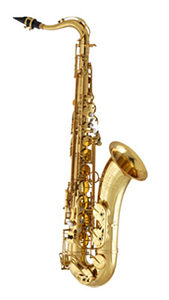
Beginning band students typically start on the alto saxophone. Alto saxophones also use a single reed vibrating against a plastic or hard rubber mouthpiece to make a sound. Its range is lower than that of a clarinet’s, but with experience, can reach notes as high as the clarinet’s highest notes. Saxophones, unlike clarinets, require pads to cover tone holes which can make it easier for beginning band students to produce different notes. Saxophones are used in wind bands but not orchestras. They are commonly used in jazz and pop music as well.
Brass
Brass instruments require a buzzing of the lips into a mouthpiece to make a sound. Unlike woodwind instruments, brass instruments always produce a sound from the mouthpiece to the bell. Through piston or rotary valves or slides, the amount of tubing between the mouthpiece and the bell changes. This is how brass instruments are able to change pitch. Brass instrument players can change pitch even more by changing the speed of their air.
Trumpet

Trumpets are the highest sounding instrument of the brass family. They use a piston valve system to add length to the trumpet and produce different notes. Trumpets also use one of the smallest mouthpieces in the brass family. They are commonly used in classical, jazz, and other pop music.
French Horn
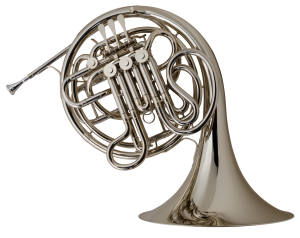
French horns have a very wide range of pitch and sound slightly lower than trumpets. Horns also have the most tubing on any brass instrument. This is because advanced French horns have a thumb trigger that changes the overall length of the instrument. It’s like having two instruments in one! Horns use rotors to change the direction of the air and guide air through different parts of the horn. They also use one of the smallest mouthpieces in the brass family. Horns are mainly used for classical playing.
Trombone

Trombones are part of the low brass family. They can change pitches by moving a slide back and forth. Advanced trombones also have a trigger which changes the overall length of the instrument, much like the French horn. The trigger on the trombone is most useful when having to play notes that involve further movement on the slide. Trombones are used in classical, jazz, and other pop music.
Baritone/Euphonium
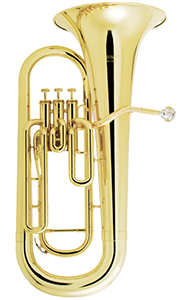
Baritones and euphoniums are also in the low brass family and even use the same mouthpieces as trombones. They are almost the same instrument but have one major difference. Baritones are cylindrical from the mouthpiece to the bell flare, where euphoniums are conical from the mouthpiece to the bell. Because of this, euphoniums tend to sound more mellow and dark. They both use a piston valve system to change pitches. Baritones and euphoniums are used in wind bands but not orchestras.
Percussion
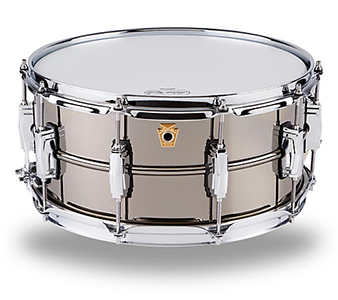
Percussionists play many different instruments including the drum, xylophone, timpani, marimba, and bass drum. They will also have the opportunity to play other smaller percussive instruments such as the guiro, tambourine, triangle, and the cymbals. Percussion instruments often involve striking an instrument to make a sound, whether it be with a drumstick, mallet, or even your hands. It is by far the most widely used family of instruments and is a part of nearly every genre of music.
Other instruments that are played in band, but not often started on, are the bassoon and the tuba. The bassoon is like the oboe in that it also uses a double reed. However, the bassoon sounds much lower than the oboe. Tubas are like baritones and euphoniums but are a little bigger and can produce lower pitches. They use the biggest mouthpiece in the brass family.
When deciding which instrument to play, many people ask, “Which instrument is the hardest to learn?” The answer that we usually give at Mel Owen Music is that each instrument is different and requires different skills to play. Some instruments may be harder for some to learn than others just based on natural ability. However, every instrument will be hard to learn if the student doesn’t practice. The number one key to learning a new instrument is practicing. The more time one spends with an instrument, the more comfortable they will be with producing good tones, learning new techniques, and achieving an overall satisfaction.